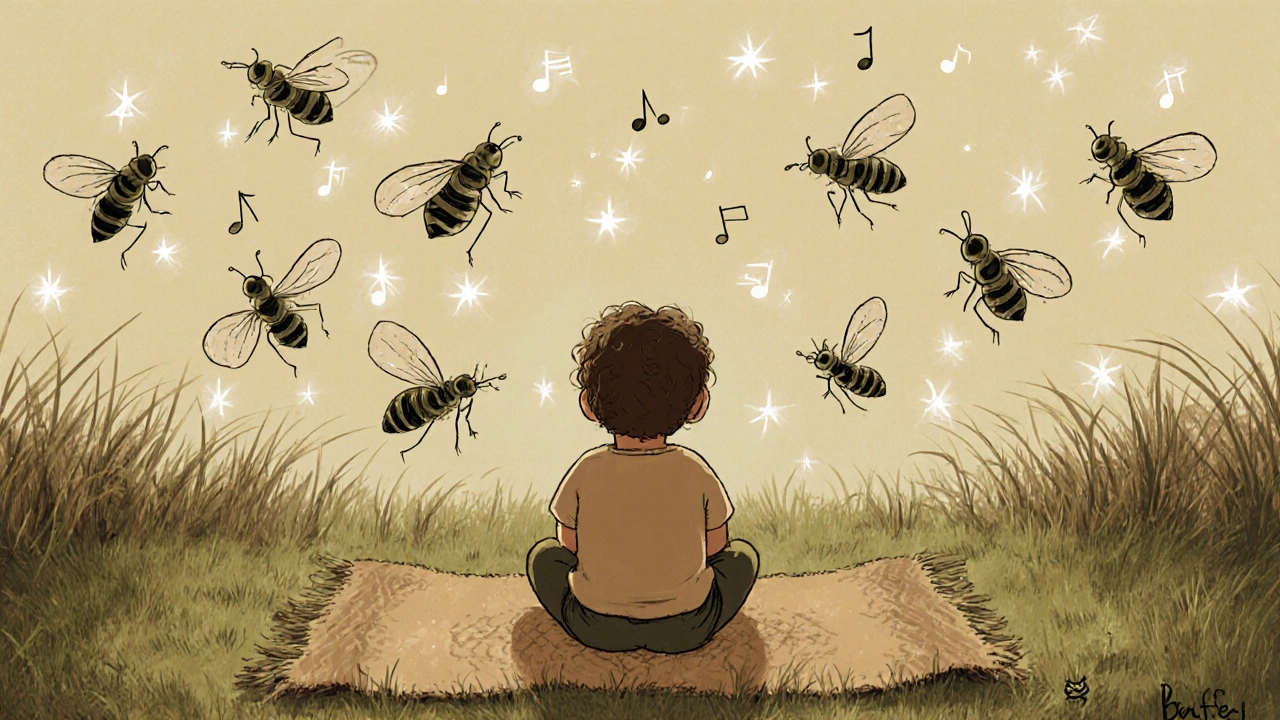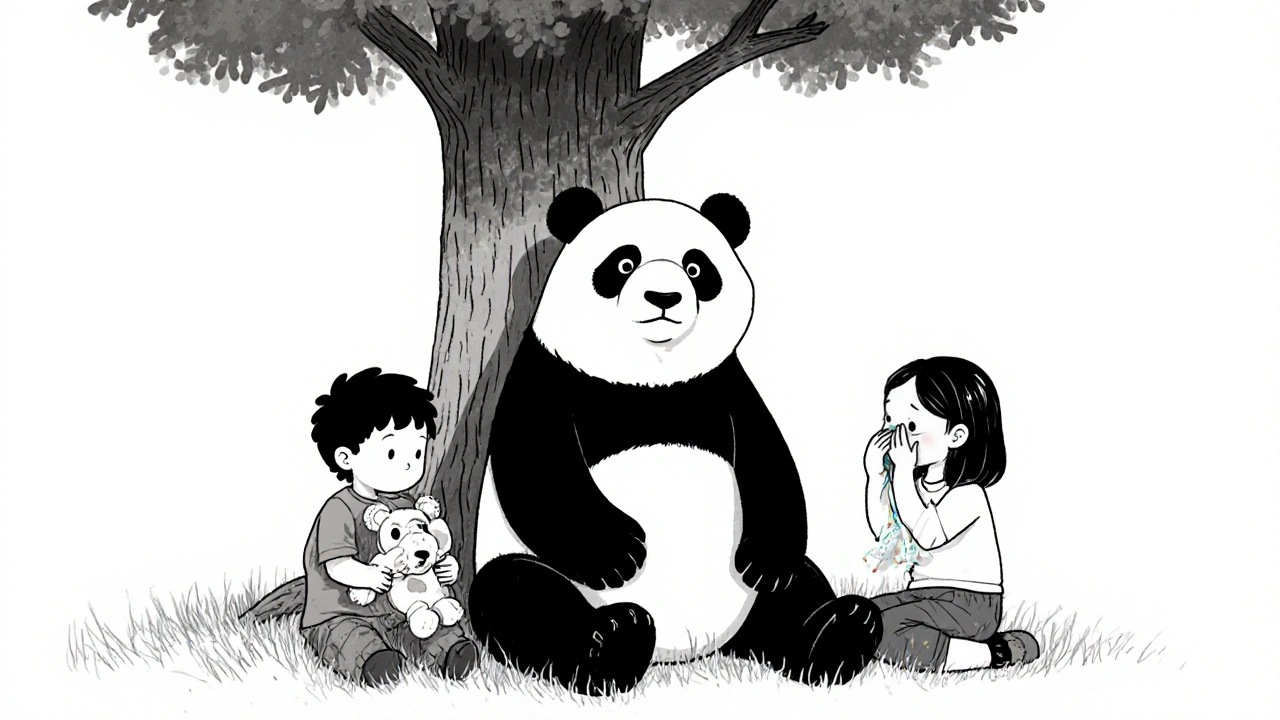Parents today have more animated shows for kids than ever before. Streaming platforms are packed with colorful characters, catchy songs, and stories that keep little ones glued to the screen. But with so many options, how do you pick the ones that are actually worth watching? Not every cartoon with talking animals is good for your child’s development. Some are fast-paced chaos. Others quietly teach empathy, problem-solving, or emotional regulation. The best animated series for kids don’t just entertain-they help them grow.
What Makes a Good Animated Series for Kids?
Not all cartoons are created equal. A good kids’ show avoids loud, sudden noises that can overwhelm young brains. It doesn’t rely on slapstick violence or mean-spirited humor. Instead, it gives children space to think, feel, and relate. Look for shows with slow pacing, clear emotional arcs, and characters who make mistakes and learn from them.
Research from the American Academy of Pediatrics shows that children under 5 benefit most from shows with simple language, repetition, and real-life problem-solving. Shows like Bluey and Daniel Tiger’s Neighborhood are built around these principles. They don’t shout. They don’t rush. They let kids sit with feelings-anger, disappointment, excitement-and see how to handle them.
Also, avoid shows that turn every problem into a song or a magic fix. Real life doesn’t work that way. Kids need models for patience, compromise, and quiet resilience. The best animated series for kids show those things without preaching.
Netflix: Quiet Stories with Big Hearts
Netflix leads with shows that feel more like bedtime stories than TV episodes. Bluey is the standout. It’s Australian, animated in soft pastels, and follows a 6-year-old blue heeler puppy and her family through everyday moments-waiting in line, playing hospital, cleaning up toys. There’s no villain. No chase scenes. Just a dad trying to be present, a mom learning to let go, and kids figuring out how the world works through play.
Another gem is Word Party, designed for toddlers. It uses simple vocabulary, clear visuals, and gentle repetition to teach words without flashcards or screens full of text. The characters are animals with expressive faces, not hyperactive robots. It’s perfect for kids under 3 who are just starting to talk.
Netflix also has Kitbull, a 10-minute short film about a stray kitten and a bullied pit bull. It’s wordless. It’s heartbreaking. And it’s one of the most emotionally intelligent pieces of animation ever made for children. It doesn’t talk down to kids. It trusts them to feel.
Disney+ and Hulu: Nostalgia Meets New Ideas
Disney+ has a strong library of classic cartoons, but the real gems are the newer originals. Princess Mirabel from Encanto got her own series, Encanto: The Series, which focuses on family dynamics, self-worth, and the pressure to be perfect. It’s rare to see a kids’ show tackle generational trauma with such warmth.
For preschoolers, Spidey and His Amazing Friends is surprisingly thoughtful. It doesn’t just show superheroes fighting bad guys. It shows teamwork, taking turns, and saying sorry when you mess up. The animation is bright, the stories are short (11 minutes), and the dialogue is simple enough for 2-year-olds to follow.
Hulu’s Beat Bugs is a hidden treasure. Each episode uses a classic Beatles song as its soundtrack, woven into a gentle story about friendship and curiosity. Kids hear “All You Need Is Love” while watching bugs help each other build a nest. It’s not just music-it’s emotional literacy wrapped in melody.

Amazon Prime Video: Diverse Stories, Real Feelings
Amazon has quietly built one of the most inclusive libraries for kids. Willa’s Wild Life follows a girl who talks to animals in her backyard. It’s calm. It’s thoughtful. It teaches kids how to listen-not just to people, but to nature, to silence, to their own instincts.
Blaze and the Monster Machines is perfect for kids who love cars and trucks. But it’s not just about speed. Each episode includes a simple STEM challenge-how to build a ramp, why wheels turn, how to measure distance. It’s learning disguised as racing.
For older kids (6-9), Grizzy and the Lemmings offers humor without meanness. The characters aren’t perfect. They get frustrated, make bad choices, and laugh at themselves. It’s the kind of show that helps kids laugh at their own mistakes instead of feeling ashamed.
Apple TV+: Minimalist, Beautiful, Thoughtful
Apple TV+ doesn’t have a huge catalog, but what it has is carefully chosen. Stillwater is a quiet show about a panda who moves to a small town and helps kids understand big emotions. It’s based on a children’s book. There’s no background music. No fast cuts. Just stillness. And in that stillness, kids learn how to sit with sadness, loneliness, and confusion.
Helpsters is a show about problem-solving. The characters are fuzzy creatures who help others fix things-broken toys, lost items, confusing feelings. It’s not about fixing the problem quickly. It’s about asking the right questions. “What happened?” “How did that make you feel?” “What do you think might help?” These are skills kids carry into school, friendships, and life.
YouTube Kids: What to Avoid and What to Seek
YouTube Kids is a minefield. Millions of videos are made just to grab attention with loud noises, flashing lights, and fake surprises. But there are hidden gems.
Stick to channels with clear educational goals: Cocomelon for nursery rhymes and routines, Lellobee for social skills, and Super Simple Songs for language development. Avoid channels that use “challenge” formats, unboxing toys, or “prank” videos. Even if they’re labeled “kid-friendly,” they train children to crave stimulation, not calm.
Set up parental controls on YouTube Kids to block search and limit watch time. Turn off autoplay. Kids don’t need to be pushed from one video to the next. They need space to breathe.

How to Use Parental Controls Wisely
Parental controls aren’t just about blocking bad content. They’re about shaping how your child experiences media. Here’s how to use them effectively:
- Set daily time limits-20 to 40 minutes is enough for kids under 6. More than that can interfere with play and sleep.
- Use age filters. Most platforms let you set content levels. Don’t skip this. A show labeled “for ages 5+” might still have scenes that scare a 3-year-old.
- Watch with your child when you can. Even 10 minutes of co-viewing helps them process what they’re seeing. Ask: “What did you like?” “Did anything feel scary?”
- Turn off recommendations. Algorithms push more of what’s watched. If your child watches one fast-paced cartoon, they’ll get 10 more. Switch to curated lists instead.
- Use screen-free rewards. “After you finish your puzzle, we can watch one episode.” This teaches delayed gratification.
What to Skip
Some shows look fun but are designed to overstimulate. Avoid:
- Peppa Pig (for kids under 4)-the loud, shrill voices and exaggerated reactions can be overwhelming.
- Teen Titans Go!-it’s funny, but it mocks rules, encourages chaos, and rarely shows consequences.
- Adventure Time (original version)-too abstract for young kids. The humor and metaphors are meant for teens and adults.
- Any show with “unboxing,” “pranks,” or “challenges” in the title.
These aren’t evil shows. But they’re not helping your child develop focus, emotional control, or patience. They’re training them to expect constant novelty.
Final Tip: Let Them Be Bored
The best thing you can do for your child’s brain isn’t to fill every minute with cartoons. It’s to let them be bored. Boredom sparks creativity. It builds imagination. It teaches kids how to entertain themselves.
Put on one good show. Sit with them. Talk about it. Then turn it off. Hand them crayons. Let them build a fort. Watch them make up a story about a talking dog. That’s where real learning happens.
The best animated series for kids aren’t the ones with the most views. They’re the ones that leave space-for silence, for questions, for stillness. And sometimes, that’s the most powerful thing of all.
What age is Bluey appropriate for?
Bluey is designed for children ages 2 to 7. Its slow pacing, realistic family interactions, and focus on everyday emotions make it ideal for preschoolers. Even toddlers enjoy the visuals and repetition, while older kids relate to the sibling dynamics and problem-solving. It’s rare to find a show that works so well across such a wide age range.
Is YouTube Kids safe for toddlers?
YouTube Kids can be safe if you use parental controls. Turn off search, enable age filters, and disable autoplay. Stick to trusted channels like Cocomelon, Lellobee, or Super Simple Songs. Avoid any channel that uses sudden loud noises, flashing lights, or "surprise" endings. Even then, limit screen time to 20 minutes a day for toddlers.
Should I let my child watch cartoons during meals?
It’s better not to. Eating while watching screens trains kids to ignore hunger cues and reduces family conversation. Use mealtime to talk, share stories, or play quiet games. If you must use screens, choose a short, calm show like Word Party and watch together. But make meals screen-free most days.
What’s the difference between educational cartoons and regular ones?
Educational cartoons teach specific skills-like counting, emotional regulation, or vocabulary-through repetition and clear examples. Regular cartoons focus on entertainment, often using fast cuts, loud sounds, and exaggerated humor. Shows like Helpsters and Word Party are educational because they build skills without feeling like a lesson. Most others are just fun.
How do I know if a show is too fast-paced for my child?
Watch for signs: Does your child seem overwhelmed? Do they cover their ears? Do they have trouble calming down afterward? Fast-paced shows have quick scene changes, loud music, and no quiet moments. Good kids’ shows pause. They let scenes breathe. If you can’t tell what’s happening without sound, it’s probably too fast.

